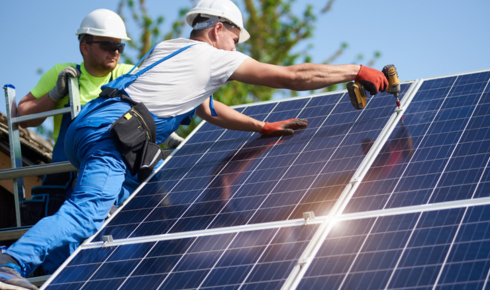If you’ve been thinking about lowering your energy bills while giving your home a fresh upgrade, you’re not alone. With energy costs constantly rising, homeowners everywhere are seeking smarter, greener ways to live — and that’s exactly where energy-efficient upgrade information comes in. From better insulation and new HVAC systems to solar panels and smart home tech, every improvement you make can bring long-term comfort and serious savings.
Energy-Efficient Upgrades & Local Rebates tip 1: Upgrade insulation & seal air leaks
Improving your home’s thermal “shell” is one of the best first steps. That means adding or upgrading insulation in the attic, walls or under floors, and sealing cracks or gaps where outdoor air can sneak in (around windows, doors, ductwork, etc.). With better insulation and airtightness, your heating and cooling system doesn’t have to work as hard. Sheiner Construction highlights insulation and air-sealing as key parts of energy-efficient remodels.
Why it matters: Less wasted energy means lower bills, more comfort, and improved indoor air quality.
Rebate tip: Many local energy or environment programmes reward insulation upgrades or require certain minimums (e.g., cavity insulation, minimum R-values) before offering rebates.
Energy-Efficient Upgrades & Local Rebates tip 2: Install energy-efficient HVAC systems (and smart controls)
Replacing an old heating, ventilation and air-conditioning (HVAC) system with a high-efficiency unit, possibly a heat-pump or mini-split in warmer climates, is another strong move. Add to that a smart thermostat or zoning controls so you only condition spaces as needed. Sheiner Construction mentions smart HVAC and better systems as part of modern energy-efficient upgrades.
Why it matters: HVAC often drives a large chunk of your energy usage, so higher efficiency + smart control = big potential savings.
Rebate tip: Look for local programmes that require equipment to meet minimum efficiency ratings (e.g., SEER, COP, ENERGY STAR) to qualify for rebates.
Energy-Efficient Upgrades & Local Rebates tip 3: Upgrade to energy-efficient windows & doors
Windows and doors are major weak spots in insulation and airtightness. Replacing single-pane or poorly fitted units with double/triple-pane, low-E glazing, or high-performance doors can make a notable difference. While Sheiner Construction doesn’t always list windows as step one, it emphasizes the envelope.
Why it matters: You reduce heat gain/loss, lower drafts, improve comfort and even reduce noise.
Rebate tip: Some local rebate systems offer grants/credits if you install certified high-performance windows/doors — check your region for minimum specs.
Energy-Efficient Upgrades & Local Rebates tip 4: Switch to energy-efficient lighting, appliances & systems
Once the big structural and mechanical upgrades are in place, don’t forget the smaller but still meaningful items: LED lighting, energy-efficient refrigerators/freezers, washer/dryer upgrades, smart plugs, etc. Sheiner Construction mentions “energy-efficient appliances” when discussing sustainable remodeling.
Why it matters: These upgrades are often lower cost, quick to implement, and can start delivering savings right away.
Rebate tip: Many local schemes have lists of eligible appliances (with minimum efficiency ratings) for rebates or voucher-systems. Keep receipts and model numbers.
Energy-Efficient Upgrades & Local Rebates tip 5: Consider renewable energy & smart home integrations
Going “beyond” basic efficiency, think about adding photovoltaics (solar panels), battery storage, or integrating smart home energy management (for example solar + inverter + battery + smart scheduling). Sheiner Construction points to rebates in relation to solar panels and harvesting systems.
Why it matters: You shift your home from being an energy consumer to a partial producer, which boosts both savings and value of the property.
Rebate tip: Local rebates or feed-in tariffs may apply for solar or battery systems. Make sure the installer and system comply with local incentive rules; some may require pre-approval.
Energy-Efficient Upgrades & Local Rebates tip 6: Review local rebate & incentive programmes BEFORE you begin
This tip ties all the others together: know what rebates or incentives are available in your region, what the eligibility criteria are, and how to apply. Many of these programmes require that you use certified contractors, complete pre-inspection, or submit paperwork within specific windows.
Why it matters: You could miss out on significant savings if you act first and then find you didn’t meet the rebate-criteria.
What to do:
- Check your national/regional government websites for energy efficiency/home improvement incentives.
- Check with your utility provider for rebates on energy-efficient appliances or systems.
- Check local building/energy-efficiency authorities for envelope/insulation upgrades.
- Get quotes and follow the rebate rules (pre-approval, certified contractor, required specs, deadlines).
- Keep documentation: invoices, model numbers, photos of installation, energy-audit results.
CONCLUSION
Energy efficiency isn’t just a buzzword — it’s the future of smart home living. The six tips shared by Sheiner Construction show that saving energy doesn’t have to mean spending a fortune. With a few smart upgrades — like improved insulation, efficient HVAC systems, and solar power — you can create a home that’s comfortable year-round, easier on the environment, and lighter on your wallet.
The secret is to plan ahead and take advantage of local rebates and incentive programs before starting your project. These programs can significantly reduce your upfront costs, making eco-friendly upgrades more accessible than ever. Each improvement, no matter how small, adds up to a big impact — for both your family and the planet.
So, whether you’re in the middle of a remodel or just getting started, think long-term. Energy-efficient upgrades aren’t just renovations — they’re investments in a cleaner, more sustainable future for your home.



